Cu Y ia A Jo u TO IS The H R e: Tim y Through ne r of Glo b al ed M Global media culture has experienced a significant evolution over time, continually adapting to new technologies and influencing the way we communicate and disseminate information worldwide. GROUP 3

(3000 BC - 1450 AD) The earliest forms of communication involved oral traditions, pictographs, and writing systems like cuneiform and hieroglyphics. In the earliest stages, communication relied on rudimentary methods like storytelling around campfires, visual representations like cave paintings, and even smoke signals for long-distance alerts. These practices laid the foundation for the development of more sophisticated communication tools in the future. Focus: Storytelling, cave paintings, smoke signals
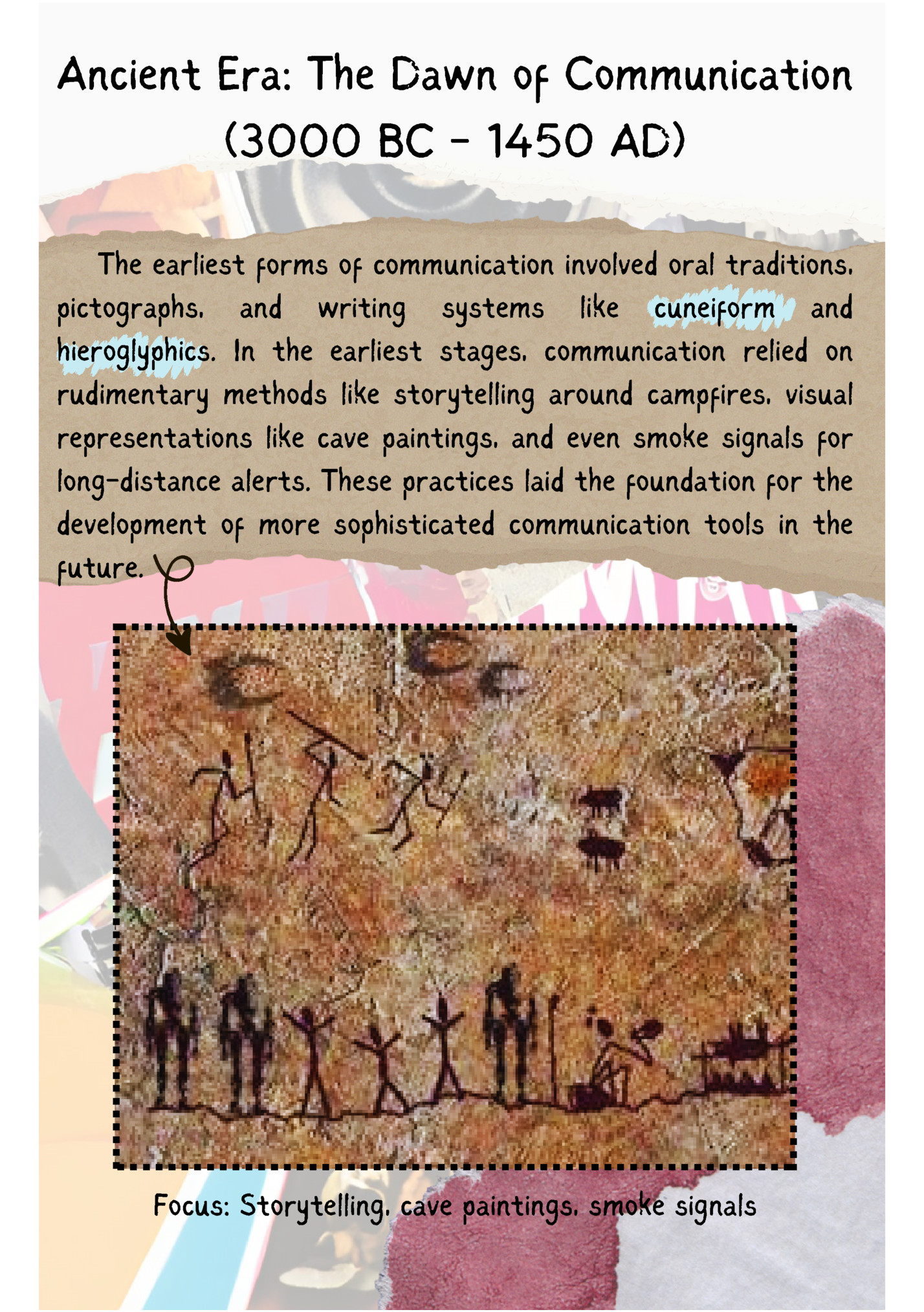
(3000 BC - 1450 AD) Hieroglyphs is the writing system ancient Egyptians used for inscriptions mostly on walls of temples and tombs, as well as statues, coffins, and sarcophagi. The invention of writing in Mesopotamia, considered one of the earliest forms of communication that transcended spoken word and physical proximity.

Takes Flight (1450 - 1800 AD) The invention of the printing press by Johannes Gutenberg in 1440 marked a turning point. It enabled mass production of books and printed materials, allowing for the widespread dissemination of knowledge and ideas for the first time. This revolutionized education, fueled intellectual discourse, and fostered a sense of shared cultural understanding across broader audiences. Focus: Johannes Gutenberg's printing press
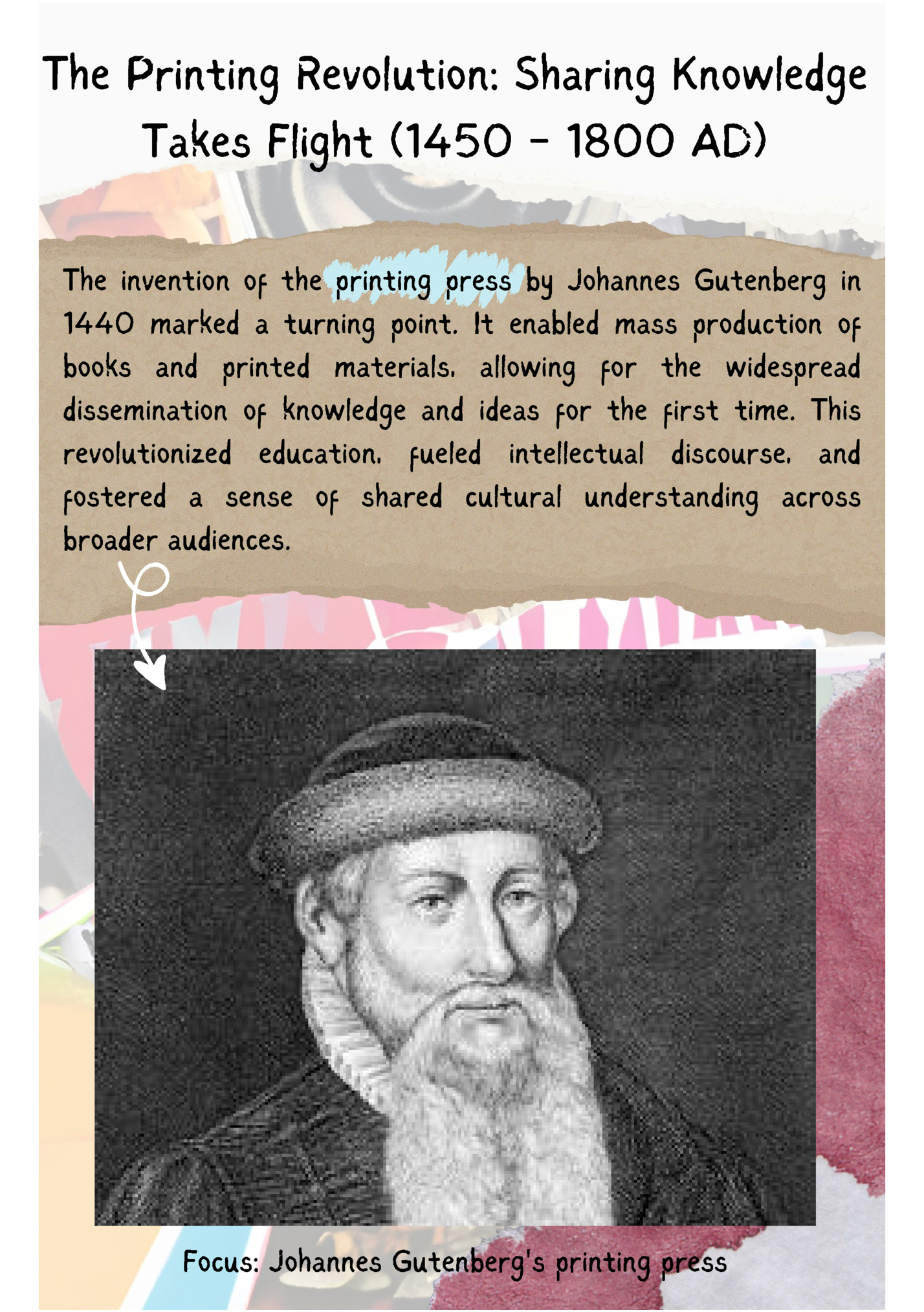
Takes Flight (1450 - 1800 AD) Gutenberg's press was the combined effort of several discoveries and inventions. The printing press was built around the traditional screw press, a precursor to today's drill press, with an added matrix on which individually-cast letters and symbols could be arranged to form the desired text
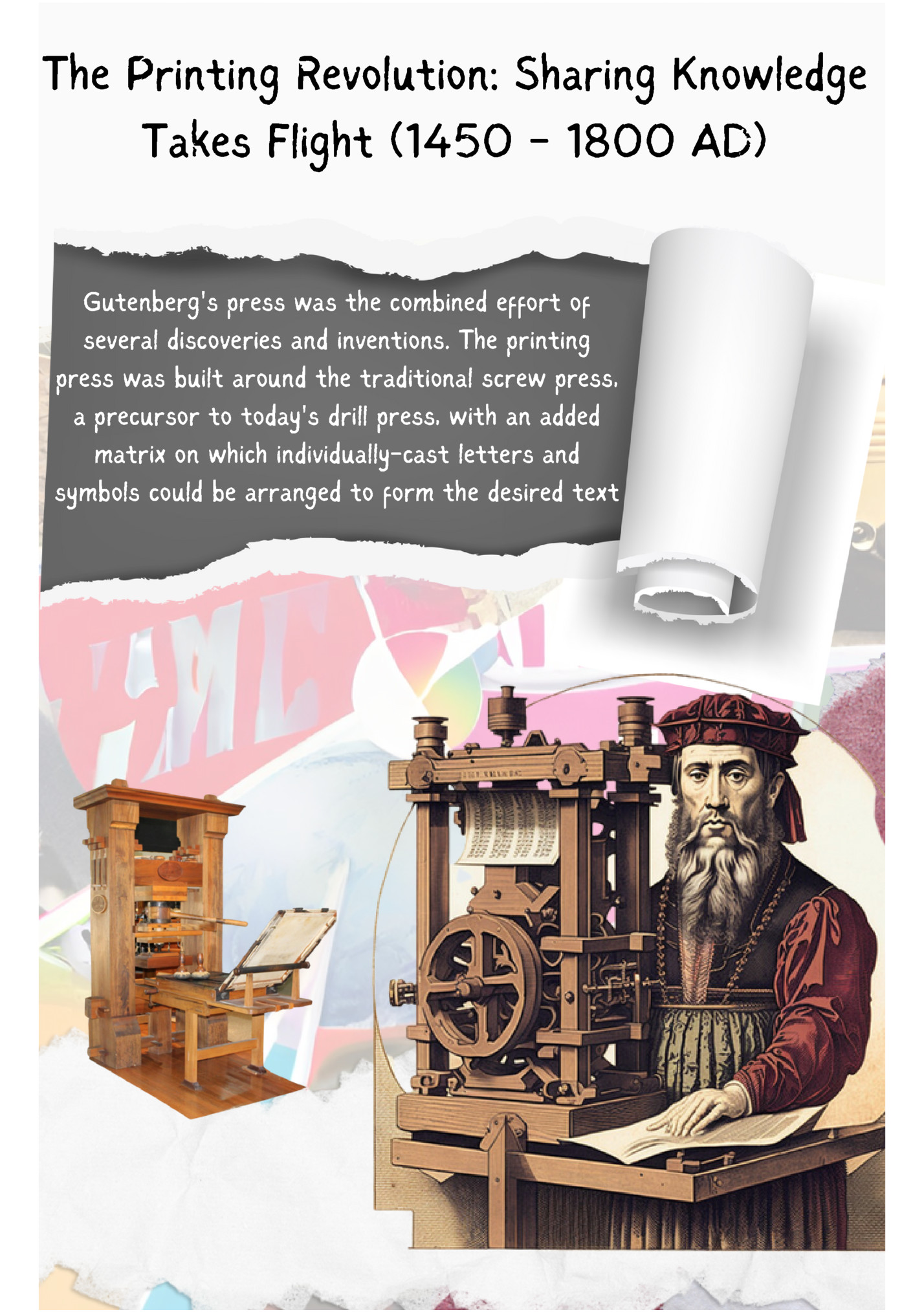
(1800 - 1930 AD) The 19th century witnessed the rise of newspapers and magazines as primary sources of information and entertainment. These publications reached a wider population compared to earlier forms, shaping public opinion and fostering a sense of national identity. Furthermore, inventions like the telegraph (1844) and the telephone (1876) significantly accelerated communication, allowing for faster and more widespread transmission of information across vast distances. Focus: Newspapers, magazines, telegraph, telephone
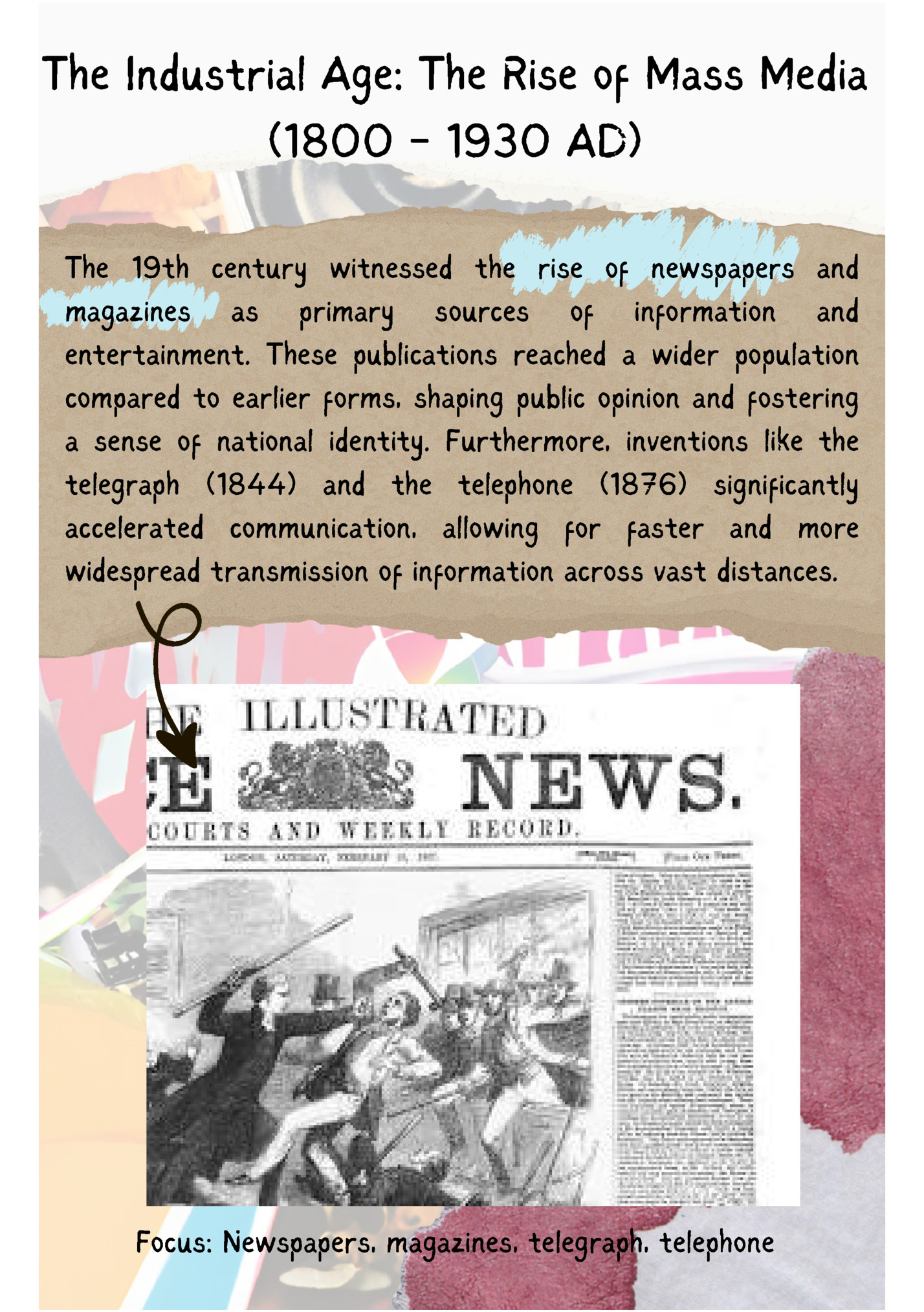
Media (1800 - 1930 AD) Johannes Gutenberg's invention of the printing press enabled the mass production of media, which was then industrialized by Friedrich Koenig in the early 1800s. These innovations led to the daily newspaper, which united the urbanized, industrialized populations of the 19th century. Newspapers, magazines, telegraph, telephone

Entertainment (1930 - 1980 AD) The 20th century ushered in the electronic age, marked by the emergence of radio broadcasting in the early 1900s. Radio provided a new platform for entertainment and news, reaching a broader audience than ever before and transcending geographical limitations. This was followed by the invention of television in the 1920s, which revolutionized both communication and entertainment by offering a visual medium for storytelling and news reporting. Television further shrank the world, fostering a sense of global interconnectedness and shared experiences. Radio, television
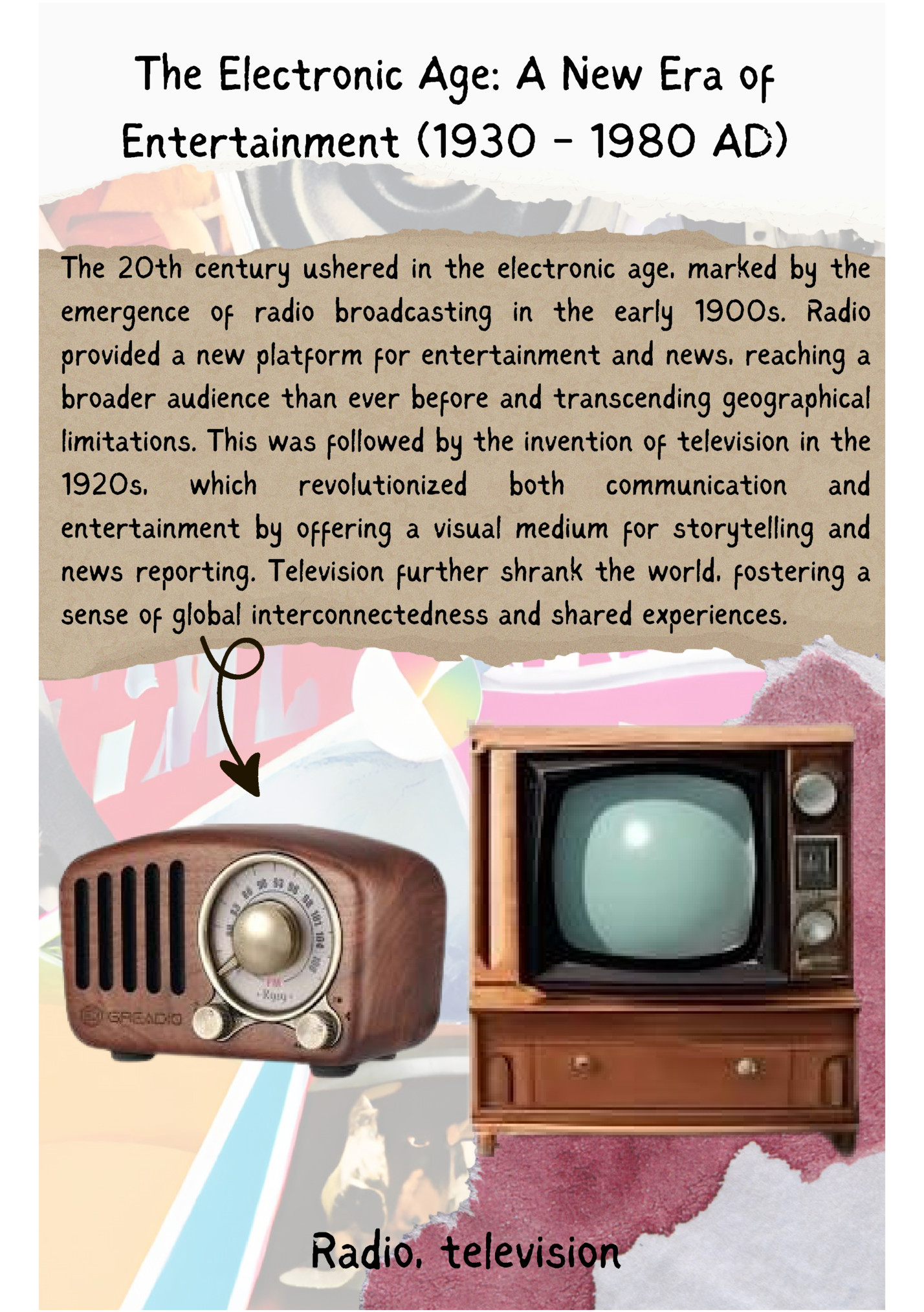
Entertainment (1930 - 1980 AD) The electronic age began with the development of the transistor. Transistors' power was harnessed by humans, which resulted in the transistor radio, electronic circuits, and the first computers. Long-distance communication became increasingly effective in this era.
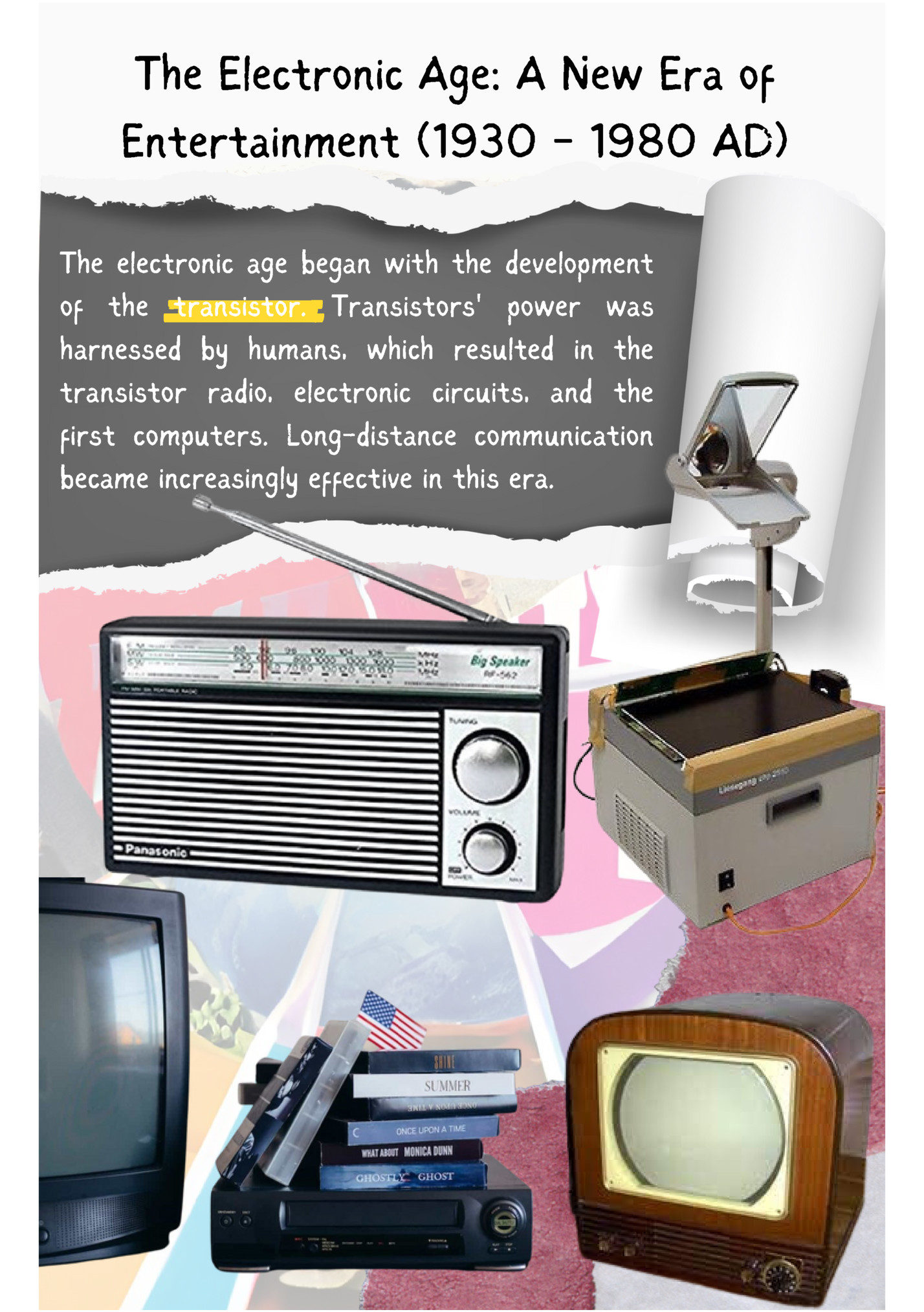
Fleepit Digital © 2021